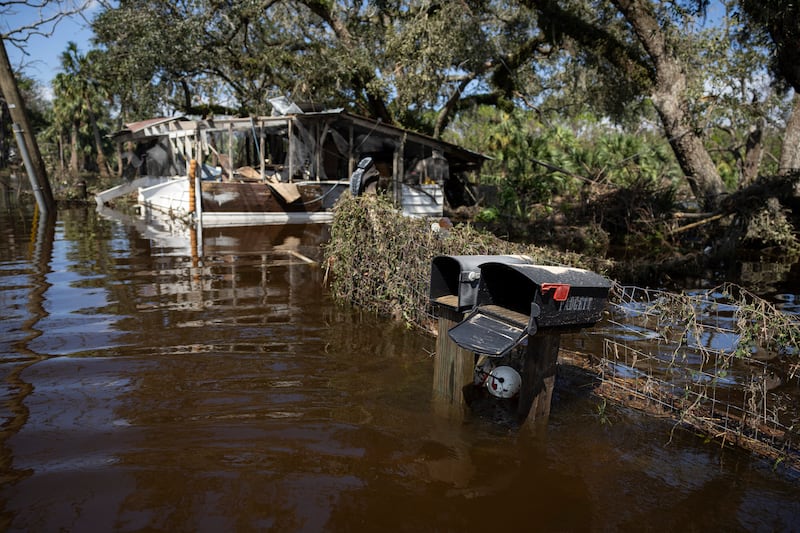Tropical Storm Helene brought life-threatening flooding to the Carolinas on Friday after leaving widespread destruction as a major hurricane in Florida and Georgia overnight that killed at least 40 people, swamped neighbourhoods and left more than 4 million homes and businesses without power.
Helene hit Florida’s Big Bend region as a powerful Category 4 hurricane on Thursday night and left a chaotic landscape of overturned boats in harbours, felled trees, submerged cars and flooded streets.
Police and firefighters carried out thousands of water rescues throughout the affected states, including in Atlanta, where an apartment complex had to be evacuated due to flooding.
Helene came ashore in Florida with 225kph winds, weakening to a tropical storm as it moved into Georgia early on Friday. As of early afternoon, the storm had been downgraded to a tropical depression and was packing maximum sustained winds of 55kph as it slowed over Tennessee and Kentucky, the National Hurricane Center (NHC) said.
Storm Éowyn: Some 56,000 homes, farms, businesses still without power as progress slows
Man receiving palliative care for brain cancer still without power after Storm Éowyn
Trump’s claim that diversity policies caused plane crash is part of an attack on ‘woke capitalism’
Storm Éowyn: ‘We were better off 75 years ago before rural electrification’
Helene’s heavy rains were still producing catastrophic flooding in the southern Appalachians, the NHC said.

More than 50 people were trapped on the roof of a hospital at midday on Friday in Unicoi County, Tennessee, about 190km northeast of Knoxville, local media reported, as floodwaters swamped the rural community.
Rising waters from the Nolichucky River were preventing ambulances and emergency vehicles from evacuating patients and others there, the Unicoi County Emergency Management Agency said on social media, but emergency crews in boats were conducting rescues.
The extent of the damage in Florida began emerging after daybreak.
In coastal Steinhatchee, a storm surge – the wall of seawater pushed ashore by winds – of up to three meters moved mobile homes. In Treasure Island, a barrier island community in Pinellas County, boats were grounded in front yards.
The city of Tampa posted on X that emergency personnel had completed 78 water rescues of residents and that many roads were impassable because of flooding. The Pasco County sheriff’s office rescued more than 65 people overnight.
Kevin Guthrie, Florida’s emergency management director, urged residents in the affected areas to stay off the roads.
“I beg you, do not go out,” Mr Guthrie said at a morning press briefing. “We have 1,500 search and rescue personnel in the impacted areas. Please get out of the way so we can do our jobs.”
Officials had pleaded with residents in Helene’s path to heed evacuation orders, describing the storm surge as “unsurvivable,” as NHC director Michael Brennan warned.
In Taylor County, the sheriff’s department wrote on social media that residents who decided not to evacuate should write their names and dates of birth on their arms in permanent ink “so that you can be identified and family notified”.
Some residents had stubbornly stayed put.
Ken Wood (58), a state ferry boat operator in Pinellas County, said he should have heeded evacuation orders rather than riding out the storm at home with his 16-year-old cat, Andy.
“I’ll never do that again, I swear,” Wood said. “It was a harrowing experience. It roared all night like a train. It was unnerving. The house shook.”
Some of Wood’s neighbours were not as fortunate. Pinellas county sheriff Bob Gualtieri said first responders were unable to answer several emergency calls from residents overnight due to the conditions. On Friday, county authorities found at least five people dead.
Two other people in Florida died, governor Ron DeSantis confirmed. Georgia Governor Brian Kemp cited 11 storm-related fatalities in his state, while North Carolina governor Roy Cooper said there had been two deaths in his state.
At least 13 people had died during the storm across South Carolina, the Charleston-based Post and Courier newspaper reported, citing local officials. – Reuters










